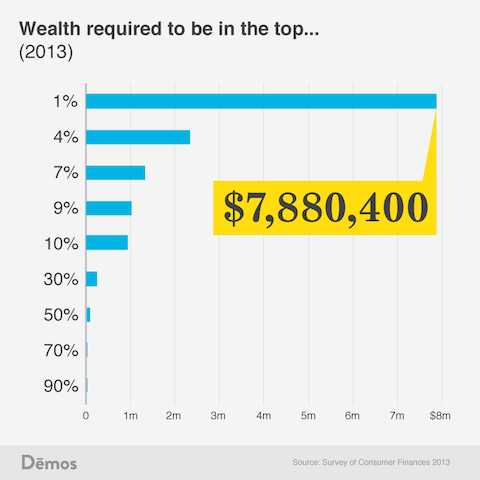
It Takes Nearly $8 Million to Join the Wealthiest One Percent
The most accurate threshold to enter the rarefied top 1% of wealthholders, $7,880,400, is almost three times as high as the Census estimates.

You would need to hold over seven million dollars to be one of the top one percent wealthiest Americans in 2013.
Yesterday, a Pew post, also picked up by Ezra Klein, was making the rounds claiming that it would take around $2.5 million to enter the top one percent of wealth holders. The post used the Census' Survey of Income and Program Participation, an excellent way of understanding poverty.
Here's how Pew summarized the Census findings:
In August, the Census Bureau released detailed wealth tabulations that imply that the minimum wealth level needed to qualify for the wealthiest 1% of American households increased from $2.3 million in 2009 to $2.4 million in 2011. That in itself indicates there were wealth gains at the very top of the wealth distribution. On the other hand, the minimum wealth level needed to be in the wealthiest 4% of households fell from 2009 to 2011, from which one infers that wealth declined for households at the wealthiest 4% level.
The overall story is borne out by every survey: the top 1% wealthiest Americans have been adding to their net worth every single year. But the $2.4 million number Pew cites is far too low, because the Census doesn't adequately capture what's happening at the top.
More accurate surveys show a lot more concentrated wealth. The Federal Reserve's Survey of Consumer Finances, a demographic and economic survey based on interviews with over 4,000 families, is a better way to gauge wealth. Why? Among surveys, it's the most thorough way to look at the composition and distribution of the country's wealth, particularly those of high net worth.
Here were their findings, based on a 2013 survey:
So the more accurate threshold to enter the rarefied top 1% of wealthholders, $7,880,400, is almost three times as high as the Census estimates.





